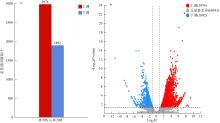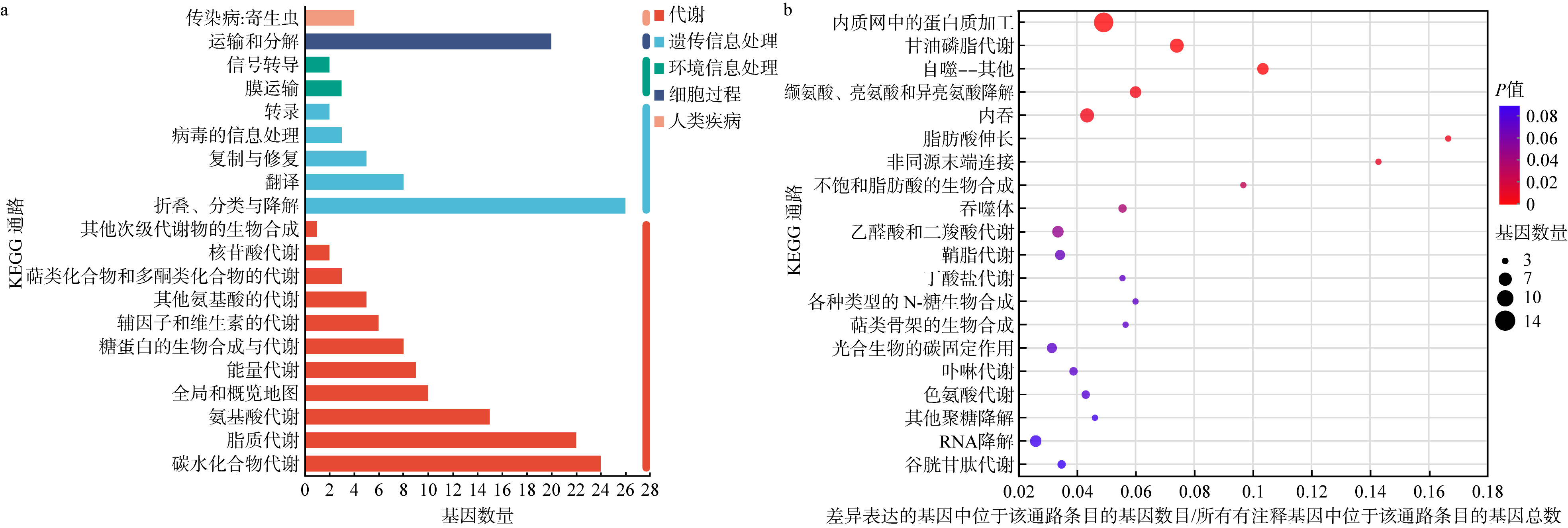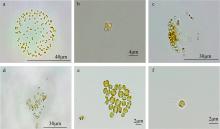Journal of Tropical Oceanography ›› 2024, Vol. 43 ›› Issue (5): 49-57.doi: 10.11978/2023174CSTR: 32234.14.2023174
• Marine Biology • Previous Articles Next Articles
Comparative study on the cell morphological transformation and transcriptome of Phaeocystis globosa Scherffel
WANG Xiyan( ), XUE Yue, MENG Bufan, FU Feng, SHEN Pingping(
), XUE Yue, MENG Bufan, FU Feng, SHEN Pingping( )
)
- Ocean School, Yantai University, Yantai 264005, China
-
Received:2023-11-24Revised:2023-12-27Online:2024-09-10Published:2024-10-10 -
Supported by:National Natural Science Foundation of China(41976114); National Natural Science Foundation of China(42376159); Open Project of the National Key Laboratory for Environmental Protection of Coastal Ecological Environment(202311)
Cite this article
WANG Xiyan, XUE Yue, MENG Bufan, FU Feng, SHEN Pingping. Comparative study on the cell morphological transformation and transcriptome of Phaeocystis globosa Scherffel[J].Journal of Tropical Oceanography, 2024, 43(5): 49-57.
share this article
Add to citation manager EndNote|Reference Manager|ProCite|BibTeX|RefWorks

Fig. 5
Changes in differential gene expression levels in different cells of Phaeocystis globosa. (a) Statistical diagram of the number of differentially expressed genes between colonial cells and solitary cells, with screening conditions of Padjust ≤ 0.05 and | log2FC | ≥ 1; (b) volcano map of differentially expressed genes between colonial and solitary cells, showing the degree of gene expression differences between different samples. The FC in log2FC is fold change, which represents the ratio of expression between two samples (groups), and is log2FC after taking the logarithm with 2 as the base, additionally the negative logarithm of the P-value (-Log10(P-value)) was used to indicate the significance of the P-value; Red indicates upregulation of genes, while blue indicates downregulation of genes"


Fig. 6
Functional annotation and enrichment pathway analysis of the differential gene KEGG between the colonial and solitary cells of Phaeocystis globosa. (a) Function annotation diagram of differentially expressed genes between the colonial and solitary cells; (b) KEGG enrichment pathway diagram of differentially expressed genes in the colonial and solitary cells (top 20)"

| [1] |
曹西华, 俞志明, 邱丽霞, 2017. 改性黏土法消除球形棕囊藻赤潮的现场实验与效果评估[J]. 海洋与湖沼, 48(4): 753-759.
|
|
|
|
| [2] |
胡晓坤, 张清春, 陈振帆, 等, 2019. 北部湾海域球形棕囊藻遗传多样性分析[J]. 海洋与湖沼, 50(3): 601-610.
|
|
|
|
| [3] |
胡晓燕, 殷明焱, 夏娃, 等, 2006. 中国金色藻属四个新记录种的超微结构研究[J]. 植物分类学报, 44(1): 64-71.
|
|
|
|
| [4] |
胡章喜, 邓蕴彦, 唐赢中, 2019. 我国北部湾球形棕囊藻(Phaeocystis globosa)的表面形态和细胞超微结构的电镜观察[J]. 海洋与湖沼, 50(3): 621-629.
|
|
|
|
| [5] |
李杰, 陆家昌, 赖俊翔, 等, 2022. 球形棕囊藻游离单细胞的密度与囊体形成的关系研究[J]. 植物科学学报, 40(1): 84-95.
|
|
|
|
| [6] |
刘洁生, 彭喜春, 杨维东, 2007. 球形棕囊藻溶血毒素对兔红细胞作用的AFM观察[J]. 热带海洋学报, 26(2): 55-58.
|
|
|
|
| [7] |
刘悦, 李丽, 翟晓辉, 等, 2022. 深圳大鹏湾一次球形棕囊藻藻华的发生过程及成因分析[J]. 热带海洋学报, 41(3): 164-171.
doi: 10.11978/2021148 |
|
|
|
| [8] |
覃仙玲, 赖俊翔, 陈波, 等, 2016. 棕囊藻北部湾株的18S rDNA分子鉴定[J]. 热带亚热带植物学报, 24(2): 176-181.
|
|
|
|
| [9] |
曲凌云, 吕颂辉, 高春蕾, 等, 2008. 棕囊藻渤海株核糖体18S rDNA和ITS基因结构序列分析[J]. 海洋科学进展, 26(2): 200-206.
|
|
|
|
| [10] |
沈萍萍, 齐雨藻, 2021. 棕囊藻属(Phaeocystis)的种类多样性及地理分布特征研究进展[J]. 海洋与湖沼, 52(1): 1-15.
|
|
|
|
| [11] |
沈萍萍, 齐雨藻, 欧林坚, 2018. 中国沿海球形棕囊藻(Phaeocystis globosa)的分类、分布及其藻华[J]. 海洋科学, 42(10): 146-162.
|
|
|
|
| [12] |
沈萍萍, 王艳, 齐雨藻, 等, 2000. 球形棕囊藻的生长特性及生活史研究[J]. 水生生物学报, 24(6): 635-643.
|
|
|
|
| [13] |
王一奇, 丁翔翔, 宋会银, 等, 2023. 青岛近海球形棕囊藻的宏条形码分析[J]. 海洋与湖沼, 54(5): 1351-1362.
|
|
|
|
| [14] |
厦门大学, 2012-03-28. 球形棕囊藻培养液的除菌方法.中国: CN201110329306.8[P](in Chinese).
|
| [15] |
徐轶肖, 何喜林, 张腾, 等, 2020. 北部湾棕囊藻藻华原因种分析[J]. 热带海洋学报, 39(6): 122-130.
doi: 10.11978/2020030 |
|
|
|
| [16] |
薛玥, 2023. 中国沿海球形棕囊藻(Phaeocystis globosa Scherffel)遗传多样性研究[D]. 烟台: 烟台大学.
|
|
|
|
| [17] |
晏荣军, 尹平河, 潘剑宇, 等, 2006. 棕囊藻囊泡的培养与去除研究[J]. 热带海洋学报, 25(3): 69-71.
|
|
|
|
| [18] |
杨和福, 2004. 棕囊藻的生物学概述Ⅰ. 形态分类和生理生态学[J]. 东海海洋, 22(1): 49-63.
|
|
|
|
| [19] |
张昆, 2020. 球形棕囊藻囊体形成的分子机制[D]. 厦门: 厦门大学.
|
|
|
|
| [20] |
|
| [21] |
|
| [22] |
|
| [23] |
|
| [24] |
|
| [25] |
doi: 10.3390/md13095993 pmid: 26393622 |
| [26] |
|
| [27] |
|
| [28] |
|
| [29] |
|
| [30] |
|
| [31] |
|
| [32] |
|
| [33] |
|
| [34] |
|
| [35] |
|
| [36] |
|
| [37] |
|
| [38] |
|
| [1] | LIU Wenguang, ZHANG Gege, CEN Xitong, HE Maoxian. Analysis of differential expressed genes from Charonia tritonis based on transcriptome sequencing [J]. Journal of Tropical Oceanography, 2023, 42(4): 146-154. |
| [2] | LIU Yue, LI Li, ZHAI Xiaohui, ZHOU Juan, YE Penghao, HUANG Shengdong. Analysis of the bloom caused by colonial Phaeocystis globosa in Mirs Bay [J]. Journal of Tropical Oceanography, 2022, 41(3): 164-171. |
| [3] | LIAO Ying, XIA Xiaomin. Effects of salinity on the growth and transcriptome of euryhaline Synechococcus sp. K1* [J]. Journal of Tropical Oceanography, 2022, 41(2): 159-169. |
| [4] | ZHANG Qian, YAN Hao, WANG Lu. Difference in gene expression of Aiptasia pulchella after albino recovery [J]. Journal of Tropical Oceanography, 2021, 40(6): 111-119. |
| [5] | XU Yixiao, HE Xilin, ZHANG Teng, LAN Wenlu. Causative species of Phaeocystis blooms in Beibu Gulf [J]. Journal of Tropical Oceanography, 2020, 39(6): 122-130. |
|
||









